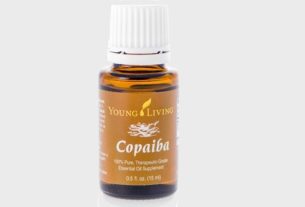Stevia is a natural sweetener obtained from the plant Stevia Rebaudiana Bertoni which can be used to replace sugar in juices, teas, cakes and other sweets, as well as in various industrialized products, such as soft drinks, processed juices, chocolates and gelatins.
Stevia is made from steviol glycoside, called rebaudioside A, which is considered safe by the FDA and can be found in powder, granulated or liquid form and can be purchased in supermarkets or health food stores.
It is also possible to cultivate the plant and use its leaves to sweeten, however this use is not yet regulated by the FDA due to a lack of scientific evidence. Stevia has the power to sweeten 200 to 300 times more than common sugar and has a bitter taste, which can slightly alter the flavor of food.

Benefits of stevia
Compared to artificial sweeteners such as sodium cyclamate and aspartame, stevia has the following advantages:
- May promote weight lossas it has very few calories;
- May help regulate appetite and reduce hungerwhich may be beneficial for overweight people;
- May help control and reduce blood sugar levelswhich may be beneficial for diabetic people;
- May Help Raise HDL Cholesterolreducing the risk of cardiovascular problems;
- Can be used in cooked or oven-roasted foodas it remains stable at temperatures up to 200ºC.
To obtain the benefits of stevia, it is recommended to consume around 7.9 to 25 mg/kg per day.
How to use
Stevia can be used on a daily basis to sweeten any food or drink, such as coffee and tea, for example. Furthermore, as the properties of stevia remain stable at high temperatures, it can also be used in the process of making cakes, cookies that are baked in the oven, for example.
It is important to remember, however, that 1 gram of stevia is equivalent to 200 to 300 grams of sugar, that is, you don’t need many drops or spoons of stevia for the food or drink to be sweet. Furthermore, it is recommended that the use of this natural sweetener be done according to the nutritionist’s instructions, especially if the person has an underlying disease such as diabetes or hypertension, or is pregnant, for example.
Side effects and contraindications
In general, the use of stevia is considered safe for health, but in some cases side effects such as nausea, muscle pain and weakness, abdominal swelling and allergies may occur.
In the case of people with diabetes, hypertension or kidney problems, children and pregnant women, its use should be guided by a doctor or nutritionist. Some studies suggest that raw stevia could cause hypotension or interact with diabetes medications.
It is important not to consume more than the daily dose considered safe, as some studies carried out with rats indicate that consumption of more than 6,700 mg/kg per day could cause fertility problems.
Common questions about stevia
Below we clarify the main doubts about stevia:
1. Can diabetics, pregnant women and children use it?
Yes, Stevia is safe and can be used by diabetic people, pregnant women or children because it has no side effects or causes allergies. Stevia also protects teeth and does not cause cavities. However, diabetics should only use it with the knowledge of their doctor, because if Stevia is consumed excessively, it may be necessary to change the dose of insulin or hypoglycemic medication that the person is using, to prevent blood sugar from decreasing. too much.
2. Is Stevia all natural?
Yes, stevia sweetener is completely natural because it is made with natural extracts from the plant.
3. Does Stevia affect blood sugar levels?
No. Some studies have shown that stevia alters glucose levels insignificantly, unlike other types of sugar, such as sucralose, for example.
4. Is Stevia bad?
The consumption of stevia is considered safe, unlike industrialized sweeteners in which some side effects have been identified. However, it is important that it is consumed in moderation and at the recommended dose.
ibliography
- NORAZLANSHAH Hazali; AZIZAH Mohamed et al. Effect of Acute Stevia Consumption on Blood Glucose Response in Healthy Malay Young Adults. Malaysian Science. 43.5; 649–654, 2014
- U.S FOOD & DRUG ADMINISTRATION (FDA). Has Stevia been approved by FDA to be used as a sweetener?. Disponível em: <https://www.fda.gov/about-fda/fda-basics/has-stevia-been-approved-fda-be-used-sweetener>. Acesso em 07 ago 2019
- EXAMINE.COM. Stevia. Available at: <https://examine.com/supplements/stevia/#neurology_neuroprotection>. Accessed on Aug 7, 2019
- ANTON Stephen et al. Effects of stevia, aspartame, and sucrose on food intake, satiety, and postprandial glucose and insulin levels. Appetite journal. 55. 1; 37-43, 2010
- AHMAD, Uswa et al. Antihyperlipidemic efficacy of aqueous extract of Stevia rebaudiana Bertoni in albino rats. Lipids in Health and Disease. 17. 175, 2018

Sign up for our newsletter and stay up to date with exclusive news
that can transform your routine!
Warning: Undefined array key "title" in /home/storelat/public_html/wp-content/plugins/link-whisper-premium/templates/frontend/related-posts.php on line 12
Warning: Undefined array key "title_tag" in /home/storelat/public_html/wp-content/plugins/link-whisper-premium/templates/frontend/related-posts.php on line 13




